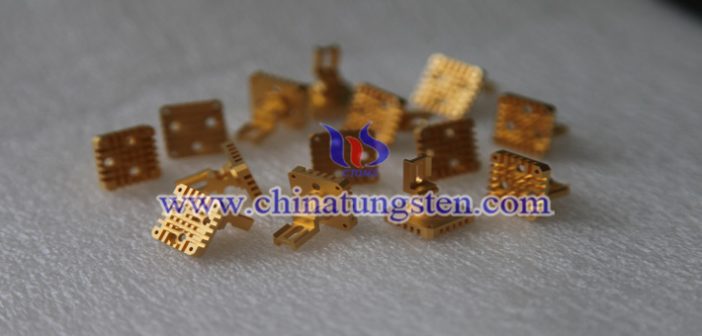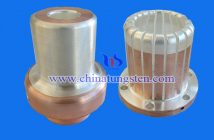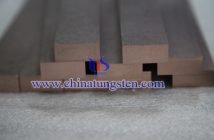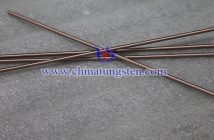Except Rockwell hardness (HRB) of detection, it is essential that electrical conductivity measuring in tungsten copper composite materials as heat sink materials. Electrical conductivity is an important indicator to measure ability to conduct electricity of tungsten copper heat sink, which directly affects the final properties of products. The stronger ability to conduct electricity, the smaller electrical resistance, on the contrary, electrical resistance is greater. For hardness testing, if tungsten copper material over-burning, the inside Cu phase will exude and lead to the emergence of the hole, making the overall decrease in hardness; while the precipitation of Cu phase of segregation occurred, and thus will make the hardness not dropped significantly. Based on the theory, the relevant researchers have concluded that the most likely two factors tungsten copper electrical conductivity of heat sink, one is copper content, the other is the porosity.
Theoretically, tungsten copper composite material is composed of tungsten (W) and copper (Cu). W phase has higher hardness and melting point, lower electrical conductivity; on the contrary, Cu has lower hardness and melting point, but it has excellent electrical conductivity. Therefore, it can be speculate that electrical conductivity of tungsten copper heat sink material depends on how much copper content, the higher the copper content, the corresponding tungsten-copper composite conductivity is higher. From chemical energy band, different metal has different equivalent orbital and atom distance, which band (or empty) overlap, constitutes a full conduction band, and easily to have a metallic conductivity. So as long as there is not full of the conduction band, whether it itself is not full band, or the empty band and full band formed by overlapping unfilled band, under the action of external electric field will form a directional flow of electrons, thereby such that the material has conductivity.
Under the intervention of external electric field, the outermost valence band electrons gain a little extra energy without violating the exclusion principle to reach many empty places within the band near. Compared with thermal excitation out-of-order, Excited electrons by the electric field and the field in the direction opposite to the momentum, it will produce a collective motion in the crystal, thereby forming current. For tungsten copper heat sink, due to different equivalent orbital and atom distance of W and Cu atoms, the band (or empty) overlap, constitutes a full conduction band, and has excellent electrical conductivity. For copper with divalent, its valence band is full band, which the valence band and a higher band overlaps, filled with electrons can occupy the vacated belt so that it has good conductivity; while tungsten with hexa-valence, its valence band is not full and the electrical conductivity is lower than copper phase. So this is a good proof of the conductivity of tungsten copper heat sink materials or conductivity depends on copper content.
The other influencing factor is porosity, which will hinder the movements of electrons. In other words, the higher porosity, the lower tungsten copper heat sink electrical conductivity. Due to tungsten copper is a kind of pseudo alloy, which composed of two kinds of metals with a big difference, there are a lot of interface and porosity between W and Cu grains. The experiment shows that tungsten copper composite material and its electrical conductivity were positively correlated with the density, the lower the density, the lower the conductivity. In addition, sintering temperature controlling is also important, electrical conductivity of tungsten copper has a sharp decline when it over-burnt. The main reasons comprise two, one is inside W phase has severe segregation and porosity, and as the main medium and Cu conductive phase may also undergone some degree of segregation, such that its penetration to the surface, the conductivity decreases with the decreasing content of Cu inside.




